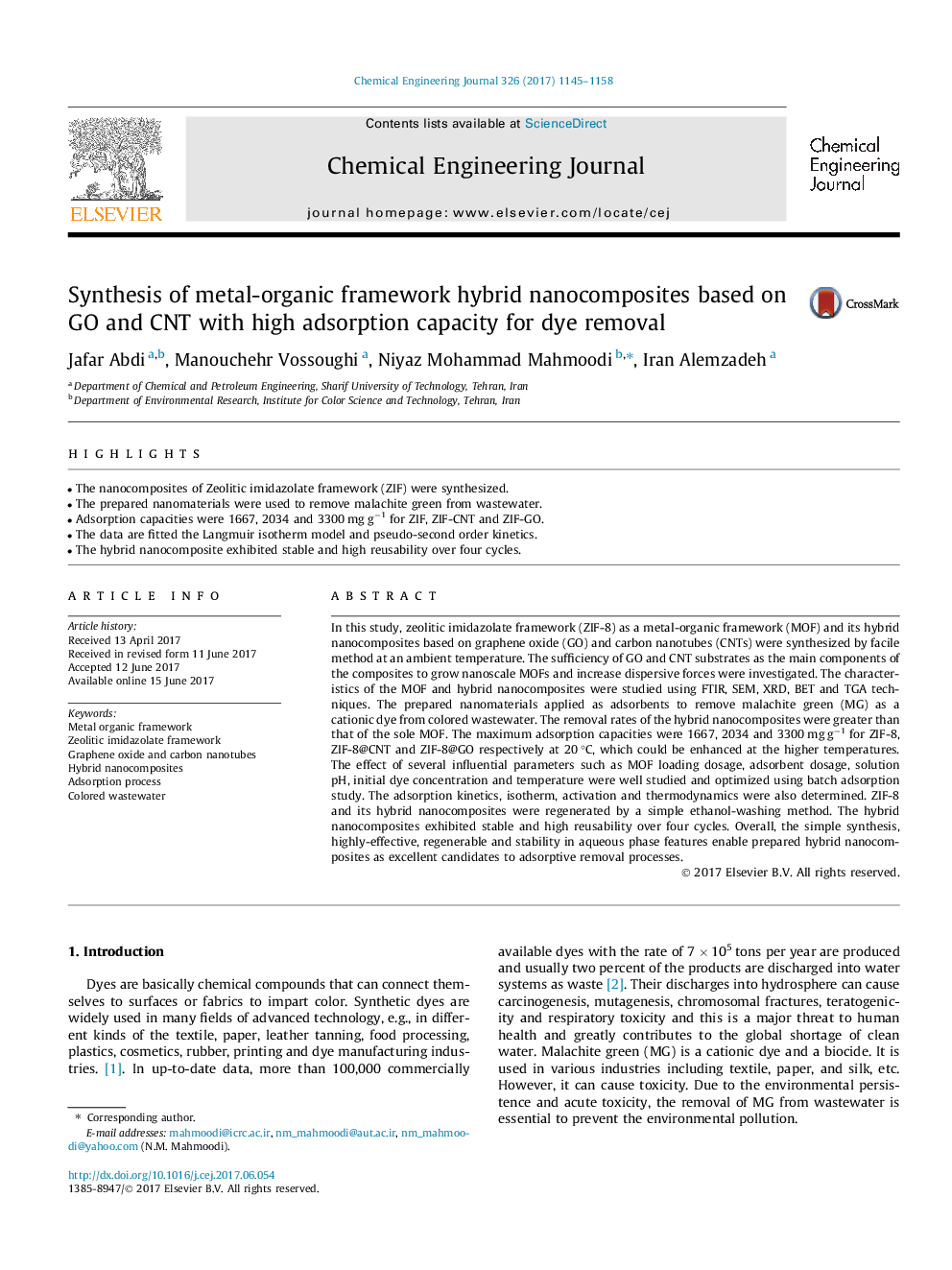| Article ID | Journal | Published Year | Pages | File Type |
|---|---|---|---|---|
| 6465550 | Chemical Engineering Journal | 2017 | 14 Pages |
â¢The nanocomposites of Zeolitic imidazolate framework (ZIF) were synthesized.â¢The prepared nanomaterials were used to remove malachite green from wastewater.â¢Adsorption capacities were 1667, 2034 and 3300 mg gâ1 for ZIF, ZIF-CNT and ZIF-GO.â¢The data are fitted the Langmuir isotherm model and pseudo-second order kinetics.â¢The hybrid nanocomposite exhibited stable and high reusability over four cycles.
In this study, zeolitic imidazolate framework (ZIF-8) as a metal-organic framework (MOF) and its hybrid nanocomposites based on graphene oxide (GO) and carbon nanotubes (CNTs) were synthesized by facile method at an ambient temperature. The sufficiency of GO and CNT substrates as the main components of the composites to grow nanoscale MOFs and increase dispersive forces were investigated. The characteristics of the MOF and hybrid nanocomposites were studied using FTIR, SEM, XRD, BET and TGA techniques. The prepared nanomaterials applied as adsorbents to remove malachite green (MG) as a cationic dye from colored wastewater. The removal rates of the hybrid nanocomposites were greater than that of the sole MOF. The maximum adsorption capacities were 1667, 2034 and 3300 mg gâ1 for ZIF-8, ZIF-8@CNT and ZIF-8@GO respectively at 20 °C, which could be enhanced at the higher temperatures. The effect of several influential parameters such as MOF loading dosage, adsorbent dosage, solution pH, initial dye concentration and temperature were well studied and optimized using batch adsorption study. The adsorption kinetics, isotherm, activation and thermodynamics were also determined. ZIF-8 and its hybrid nanocomposites were regenerated by a simple ethanol-washing method. The hybrid nanocomposites exhibited stable and high reusability over four cycles. Overall, the simple synthesis, highly-effective, regenerable and stability in aqueous phase features enable prepared hybrid nanocomposites as excellent candidates to adsorptive removal processes.
